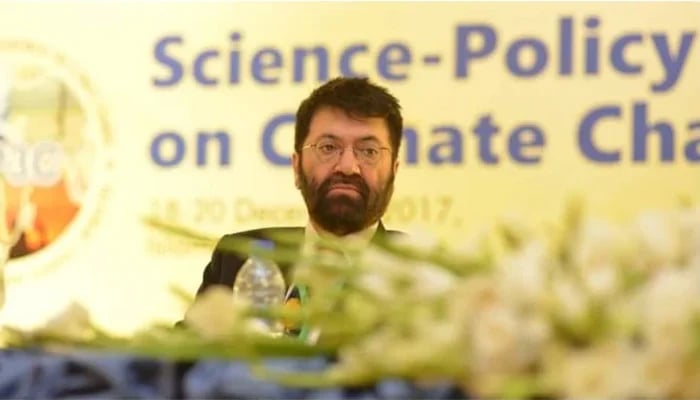Restoring the HEC chairman and the way forward for the education sector
It is time to put an end to the pursuit of quantity – growing the number of BA/BS and MA/MS graduates. Instead, pay attention to producing better BA/BS graduates
January 22, 2022

On Tuesday, January 18, Chief Justice Athar Minallah and Justice Aamer Farooq of the Islamabad High Court issued a verdict in favour of the petition by Mosharraf Zaidi and others challenging the removal of Dr Tariq Banuri from the position of chairman, Higher Education Commission (HEC), by a cabinet notification on March 26 of last year.
The short-order verdict declares the notification unlawful, thus restoring Dr Banuri as chairman.
Dr Tariq Banuri was removed by first amending the HEC Ordinance to reduce the tenure of its chair from four to two years, and then applying that amendment retroactively to the sitting chairman, who had been appointed in May 2018 and was due to serve until May 2022.
The full verdict has not been made public yet, which leaves two important open questions that will hopefully be answered in the full judgment:
First, will the full judgment extend Dr Banuri’s tenure by about 10 months to compensate for the time spent out of office in litigation or will his appointment expire in May 2022?
Second, will the judgment let the 2021 amendment to the Higher Education Commission Ordinance, that reduced the chairman’s tenure, stand, or reverse it like it reversed the notification of removal?
Whatever the answers to the above questions, a lot of people are waiting with great anticipation. After 10 months of legal sparring, 10 wasted months that could have been used to enact much needed higher education reform, we are back where we left off in March last year.
The court has spoken, and moving forward, if whatever remains of the returning chairman’s tenure is not to be squandered in dysfunction as well, the petitioners and the government will both have to show some grace, pick up where they left off in March to go back to the business of working towards the betterment of higher education.
So far, the government has done well by not creating any unnecessary conflict. I am counting on other writers to dissect these developments in the coming days, covering legal and political angles and what is being said through the capital’s political-bureaucratic grapevine.
While fascinating, it takes attention away from educational issues, so I am bringing up (once again) priority issues that should be focused on. Here is a list of agenda items that I recommend should at least be initiated in this government’s remaining term:
First, focus on improving transparency in higher education, quality and employability of university graduates and stop pumping quantity. Put an end to the pursuit of quantity – growing the number of BA/BS and MA/MS graduates.
Instead, pay attention to producing better BA/BS graduates. For a start, make universities improve their bachelor’s programmes to match not some faraway MIT, Stanford or Ivy League college, but catch up with Pakistan’s best universities, like LUMS, NUST IBA and Aga Khan, that are able to produce skilled, thinking, entrepreneurial graduates.
Emphasise raising the quality of BA/BS programmes instead of launching more MA/MS programmes. A graduate from a good BA/BS programme is more employable than a mediocre MA/MS graduate.
Second, cement the separation of the legacy two-year programmes from four-year BA/BSc programmes and their reclassification as associate bachelor’s programs.
The Pakistani nomenclature that puts both two- and four-year programmes in the same basket of bachelor’s degrees is an aberration in global academia and invites additional scrutiny of credentials of every Pakistani that goes abroad for work.
Two-year associate bachelor’s programmes are needed because not every student is able to make the time or financial commitment for a four-year programme.
For these students (reformed) two-year programmes that teach employable skills will be preferred over remaining unskilled and unemployable high-school graduates.
Third, operationalise the long talked about tiered classification of universities into Tier-I (research universities offering everything up to PhD programs), Tier-II (universities focused on four-year BA/BS programmes) and Tier-III (community colleges for two-year associate bachelors and vocational programmes) institutions, as laid out in the HEC’s Vision 2025.
All higher education institutes are not the same, and to measure their performance by the same one yardstick of ‘research output’, papers published betrays a lack of understanding of ground realities.
Continuing to judge all higher education institutions by one metric is perhaps the single most significant factor that has contributed to the mess in higher education today.
Fourth, develop a policy for online/distance /virtual education that many universities have been asking for. This will require input from vice-chancellors and rectors on the HEC’s Policy on Virtual Education.
The last two years have given every educational institution – from pre-schools all the way to grad schools – experience with online learning, varying from mixed to bad. There is no need to dive into online learning head-first for all kinds of programs.
For a start, online learning can be piloted for short certificate and associate bachelor’s programmes that do not have lab or equipment requirements beyond what a student may be reasonably expected to have available – for example, a computer with internet connection.
Then, establish that online programmes deliver learning equivalent to traditional in-person/on-campus programmes before demanding broad equivalence between the two.
Pay special attention to ensure that assessments for online programs are just as credible (free of plagiarism, cheating) as assessments conducted in on campus programmes.
Fifth, improve quality and raise standards of higher education by developing an effective retention policy for manpower (tenure track faculty), often developed at great national expense (paid in precious foreign exchange), beyond the contractually obligated five-year bond period.
Below average talent cannot produce top-level graduates. Stem the hemorrhaging of the best talent among faculty.
Sixth, the HEC’s ranking of Pakistani universities is misleading and has to go. Any ranking that places all universities on a single scale is problematic for two reasons: one, there is great diversity in the kinds of HEIs in Pakistan.
It is neither objectively possible nor useful to force this variety of higher education institutions on a single linear scale. And, two, all rankings that reduce the many features and characteristics of universities to a single number do so by assigning weights to input factors which are subjective and arbitrary.
(Prospective) students and their guardians are primary customers of information about universities. Many of the statistics that go into computing the HEC’s rankings are easily obtainable but are largely irrelevant and of little to individual students.
Instead, the HEC could serve the public better by publishing relevant raw data that goes into students’ decision-making while selecting universities for admissions.
Data items like graduation rates (of each program), employment rates (after six months, two years), salary surveys (by programme), cost, type of institution, etc.
My favorite example is the US Department of Education’s ‘College Scorecard’ website which publishes raw data in easily searchable/filterable form and lets students sift through universities and colleges to find the one that best fits their personal circumstances.
Many universities also participate in US News’ Common Data Set (CDS) initiative, under which universities publish detailed statistics about their student body and programmes in the shape of a standardized form annually. The HEC could make universities submitting data to its Higher Education Data Repository (HEDR) a routine requirement.
All that the political wrangling of the last 10 months accomplished was dysfunction in higher education. We saw news of universities unable to pay their faculty members, vice-chancellors getting axed, while universities with questionable sustainability continued to pop up, plagiarism cases kept making headlines, and the exodus of faculty from Pakistani academia continued.
The education sector, including higher education, has been a mess for far too long. We are doing a disservice by engaging in petty fights for individual agendas and maintaining the status quo. It is time to put the future of the youth ahead of all else.
The writer (she/her) is the technical adviser to the MoFEPT. Views are her own.
Originally published in The News









